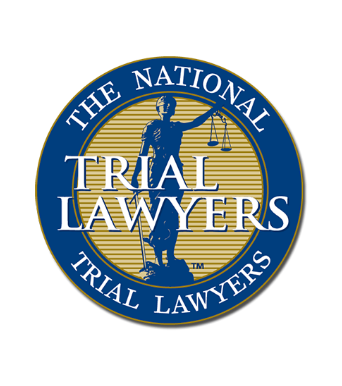Olney, MD Medical Malpractice Lawyer
Legal support can be crucial in medical malpractice cases because of the complex nature of these legal proceedings. Such cases often involve intricate medical concepts, extensive documentation, and the need for expert witness testimony.
Moreover, defendants in medical malpractice cases are often represented by expensive teams of attorneys, doctors, and investigators who will search for ways to dispute plaintiffs’ cases. Thankfully, the team at our firm is here to offer thorough guidance and support to injured patients. We will fight fiercely for victims of medical malpractice during each stage of their lawsuits. Our team will not rest until we have obtained the compensation our clients deserve.
Get in touch with our medical malpractice lawyers today by calling Rice, Murtha & Psoras at (410) 694-7291.
Proving Fault in Olney Medical Malpractice Cases
In order to acquire monetary damages through a medical malpractice lawsuit, you must present evidence that shows you were hurt because your physician breached the appropriate standard of care. There are many forms of evidence that may be used to show such a breach occurred. For example, any of the following may be utilized by our medical malpractice attorneys:
Pathology Reports and Diagnostic Imaging
Pathology reports and diagnostic imaging, such as X-rays, MRIs, CT scans, and ultrasounds, can provide objective evidence of a patient’s medical condition and any abnormalities present. Accordingly, these records may be used to corroborate or refute a healthcare provider’s diagnosis, treatment decisions, or surgical outcomes.
For instance, pathology reports may reveal missed diagnoses, misinterpretations, or errors in laboratory testing. Meanwhile, diagnostic imaging can uncover complications, surgical errors, or foreign objects left behind during procedures.
Witness Depositions
Depositions of witnesses like healthcare providers, hospital staff, and other individuals involved in the patient’s care can be instrumental in uncovering facts and establishing fault in a medical malpractice case. Witness depositions allow our legal professionals to question witnesses under oath, gather sworn testimony, and explore critical details or discrepancies in the case at hand.
Medical Guidelines and Standards
Medical guidelines, protocols, and standards of care established by professional medical organizations, government agencies, or healthcare institutions can serve as benchmarks for evaluating a defendant’s conduct in a medical malpractice case. These guidelines outline recommended practices, treatment protocols, and safety measures that healthcare providers are expected to follow when diagnosing, treating, or managing specific medical conditions. Deviations from established medical standards can indicate potential negligence or substandard care, supporting the plaintiff’s allegations of medical malpractice.
Patient Testimony and Documentation
Patient testimony and documentation, including written accounts, diaries, or journals detailing the patient’s experiences, symptoms, treatments, and interactions with healthcare providers, can provide valuable insight into the circumstances surrounding the alleged malpractice.
Accordingly, if you were hurt because of medical malpractice, it may be beneficial to record a recollection of the incident at issue and begin tracking the progress of your injury in a journal. Additional documentation may include photographs of injuries or other relevant information that supports your claim of medical negligence.
Surveillance Footage and Electronic Records
Surveillance footage from hospitals, clinics, or other healthcare facilities can also help patients prove that malpractice occurred. For instance, such footage may offer visual evidence of the patient’s interactions with healthcare providers, the quality of care received, and any unusual or negligent behavior exhibited by medical staff.
Additionally, electronic records, including emails, text messages, or electronic medical records, may contain valuable information regarding communication between healthcare providers, treatment decisions, or documentation of patient care. These electronic records can help establish a timeline of events, identify potential lapses in communication or documentation, and support the plaintiff’s allegations of medical malpractice.
Consultation and Referral Records
Furthermore, consultation and referral records can be instrumental in establishing fault in medical malpractice cases. These records may reveal instances of miscommunication, delays in diagnosis or treatment, or failure to follow up on recommendations made by consulting or referring physicians.
Informed Consent Forms
Informed consent forms signed by the patient or their legal representative prior to medical procedures or treatments can serve as important evidence in certain instances. These forms document a patient’s acknowledgment and understanding of the risks, benefits, and alternatives associated with a particular medical treatment.
In cases where the patient alleges that they were not adequately informed of the risks or potential complications of a procedure, informed consent forms can help establish whether the healthcare provider fulfilled their duty to obtain informed consent and disclose relevant information to the patient.
Documentation of Follow-Up Care
Lastly, documentation of follow-up care such as post-operative notes, progress reports, and notes from follow-up appointments can be used by plaintiffs in malpractice cases. These records may reveal instances of delayed recognition of adverse events or failures to provide appropriate post-operative treatment. Fortunately, our legal team can assist plaintiffs when recovering and reviewing their records of follow-up care.
Understanding What Constitutes Medical Malpractice in Olney, MD
When a healthcare professional, whether it’s a doctor, nurse, or another medical practitioner, causes an injury because they fail to meet the established standards of care within the medical community, it constitutes medical malpractice. This deviation from accepted norms can cause patients to suffer significant injuries, providing grounds for legal action to recover damages.
However, it is essential to recognize that not every unfavorable treatment outcome qualifies as medical malpractice. Rather, to pursue damages successfully, a plaintiff must demonstrate that their injury resulted from their healthcare provider’s departure from the standard treatments typically administered by other similarly experienced providers under similar circumstances.
Malpractice may arise in many different forms. For instance, a patient may be hurt because their doctor misdiagnosed their condition or made a medication error. Moreover, someone may suffer an infection because a medical facility did not implement proper cleaning practices. In any case, our legal professionals can help victims assess their potential claims and fight for payment.
Call Our Attorneys for Assistance with Your Olney Medical Malpractice Lawsuit
If you were hurt as the result of medical malpractice in Olney, MD, get help from our medical malpractice lawyers by calling Rice, Murtha & Psoras at (410) 694-7291.













